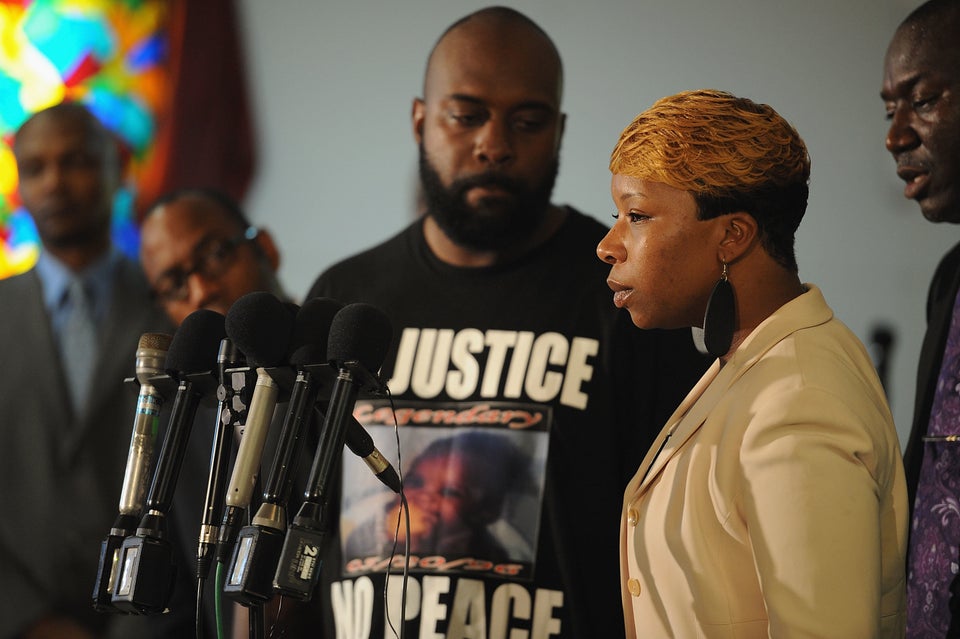
The shooting death of unarmed black teen Michael Brown has sparked nationwide protest and outrage as the country continues to grapple with its history of racial discrimination and police brutality, especially against African-Americans. Brown's name is one of the latest additions to a long list of black males killed by officers and vigilantes in a narrative that is becoming all too familiar to many people of color.
The incident in Ferguson has not only highlighted longstanding racial tensions in the suburb itself, but has also laid bare the disparities facing black citizens in the entire country. While the Brown shooting again raises questions about the prevalence of racial profiling and police misconduct, it also reaches far beyond that, stressing ongoing issues of economic inequality, housing discrimination and unequal access to adequate education.
Some wonder why this incident seems to be the tipping point, but a quick look at the numbers can drive the point home:
The age of Michael Brown, the unarmed black teenager killed by Officer Darren Wilson in Ferguson on Aug. 9. Brown reportedly was confronted by Wilson because he was walking in the street, "blocking traffic." Brown was a recent high school graduate and was scheduled to start classes at Vatterott College, a Missouri trade school, just two days after he was killed.
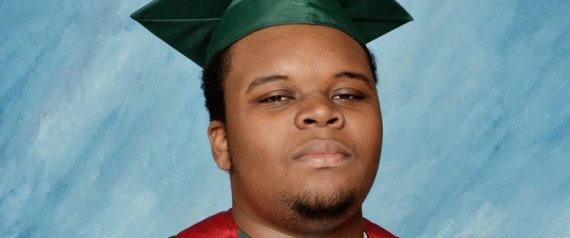
The number of shots fired into Brown's body by Wilson during the incident, according to a preliminary autopsy. Two of the bullets struck Brown in the head, while four struck his right arm. Wilson claims that Brown assaulted him and was reaching for his gun, forcing Wilson to use lethal force. Eyewitnesses have said that Brown had his hands up at the time of the fatal shot. The episode has served as a broader reminder that police officers generally are trained to kill targets when they shoot.
The unknown number of people killed in police-involved shootings each year, as FiveThirtyEight reports:
Efforts to keep track of “justifiable police homicides” are beset by systemic problems. “Nobody that knows anything about the SHR puts credence in the numbers that they call ‘justifiable homicides,’” when used as a proxy for police killings, said David Klinger, an associate professor of criminology and criminal justice at the University of Missouri who specializes in policing and the use of deadly force. And there’s no governmental effort at all to record the number of unjustifiable homicides by police. If Brown’s homicide is found to be unjustifiable, it won’t show up in these statistics.
The percentage of American law enforcement agencies that report any police-involved shootings to the FBI’s database -- 700 out of a total of 17,000, according to USA Today. These agencies only record so-called "justifiable homicides," or incidents in which an armed suspect was shot by police. All in all, we're left with a reporting system that tells us very little about how many people are killed by police, and nothing about those killed in an unjust fashion.
The number of unarmed black men killed by police in the past month alone. Mother Jones has more on the victims and the circumstances of their death. Apart from Brown, they include Eric Garner, the NYPD chokehold victim who died while police attempted to arrest him for allegedly selling untaxed cigarettes; John Crawford, a 22-year-old gunned down by police in a Walmart while holding a BB gun he'd picked up off the shelf; Ezell Ford, a 25-year-old allegedly shot in the back by police during an "investigative stop"; and Dante Parker, a 36-year-old who died in police custody after being tased while resisting arrest.
The approximate number of tweets sent with the hashtag #IfTheyGunnedMeDown since Brown's death, according to Topsy. As a commentary on the negative way black victims are often depicted in the media, black Americans participating in the Twitter movement posted two completely different pictures of themselves, asking which one would be shown if they were killed.
The percentage of Americans who believe that police officers generally aren't held accountable for misconduct, according to an April 2014 Reason-Rupe poll. That number was 66 percent among African-American respondents.
The percentage of young black men who said they had been treated unfairly in dealings with police in the past 30 days, according to a recent Gallup poll.
The number of black officers on the Ferguson police force. While 67 percent of Ferguson's residents are black, 50 members of the town's 53-officer police force are white.
The percentage of traffic stops in Ferguson that targeted African-Americans in 2013, according to a racial profiling report by the Missouri Attorney General’s Office. African-Americans were targeted for 92 percent of vehicle searches, though searches of white suspects were more likely to turn up contraband (34 percent of searches of white suspects found contraband, versus only 22 for black suspects).
Coincidentally, 86 percent is also the percentage of African-Americans who think city police are usually tougher on African-Americans, according to a recent HuffPost/YouGov poll.
The percentage of total 2013 arrests in Ferguson that involved African-Americans, also according to the attorney general's report. Of 521 arrests made by the Ferguson Police Department in 2013, 483 involved black suspects. Only 6.9 percent involved white suspects.
The percentage of Ferguson's general budget that was paid for by revenue from fines and court fees in the 2012 fiscal year. It was forecast to account for an even larger share of revenues (21 percent) in the 2013 fiscal year, which ended June 30 -- making it that year's second-largest source of revenue.
Slate's Jordan Weissman writes that the importance of these dollars has led to a system that has encouraged “for-profit policing,” which itself has fed racial tensions in the region:
When you split a metro area into dozens of tiny local governments (St. Louis County, to be clear, doesn’t include the actual city of St. Louis, which spun off from it in the 19th century), they tend to duplicate each others’ services, which is of course extremely expensive. But raising taxes so that each tiny borough can afford its own police and fire department is a nonstarter, since wealthy residents can always just move one town over. End result: You have police departments that self-fund by handing out tickets. And thanks to the delightful racial dynamics of U.S. law enforcement, black residents are disproportionately stopped and accosted, even though police in Ferguson are less likely to find contraband when they search black drivers than when they search whites.
The budget of the St. Louis County Police Department for 2014.
This number doesn't include the value of the Pentagon's 1033 grants, which since 1997 have flooded local police departments with $4.3 billion in gear, including surplus military-grade equipment at wholesale prices. In 2013, the program sent $449 million of military equipment to local law enforcement agencies. St. Louis County received 12 assault rifles, 6 pistols, 3 helicopters and 2 night vision pieces, according to data obtained by the New York Times. (You can find out what exactly your local authorities got from the Pentagon here).

The number of black men nationwide who can expect to go to prison at some point in their lifetime, according to data cited by the Sentencing Project, a Washington, D.C.-based group that advocates for prison reform. That number is one in six for Latino males, and one in 17 for white males.
“Racial minorities are more likely than white Americans to be arrested,” the report states. “Once arrested, they are more likely to be convicted; and once convicted, they are more likely to face stiff sentences.”
The report asserts that the reasons for this massive disparity manifest themselves at every phase of the criminal justice system, beginning with a higher likelihood for police to stop and arrest black suspects, and ending with an increased likelihood that black defendants will be forced to rely on overworked and underfunded public defenders.
Where St. Louis County ranks in a list of the most black-white segregated places in the country, according to one metric. More segregated communities often suffer from higher levels of inequality on a number of levels.
In St. Louis between 2005 and 2009, for example, the average black household lived in a neighborhood where 22.5 percent of the residents were below the poverty line, according to a Brown University analysis of census data. The average white household lived in a neighborhood where 9.2 percent were below the poverty line. The average affluent black family in St. Louis lived in a neighborhood nearly twice as poor (16.9 percent poverty share) as the neighborhood an average white family in the city lived in.
This fits in with a nationwide pattern. "Even affluent blacks have greater exposure to poverty than the average white in all but two metros (the exceptions are Las Vegas and Riverside)," the researchers found.
They noted that living in neighborhoods with higher rates of poverty can affect multiple spheres of life, since neighborhood poverty correlates with "inequalities in public schools, safety, environmental quality, and public health."
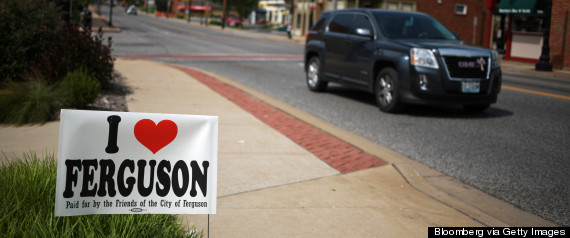
The percentage of black Americans who owned homes in 2013, compared to 73.3 percent of white Americans, according to an annual Harvard study.
This gap didn't come about by accident, as Ta Nehisi-Coates has detailed at length; among other factors, Federal Housing Agency and private bank redlining made it difficult for black Americans to obtain conventional mortgages for much of the 20th century, and predatory contract sellers took advantage of that situation to charge extortionate prices for properties in black neighborhoods and evict tenants when they couldn't make payments on time.
As a result, black Americans missed out on a key source of wealth generation, and are still feeling the consequences.
Al Jazeera America sums up the ripple effects that this disparity has had in the St. Louis area specifically:
Many black residents wound up renting, moving often and never acquiring home equity or savings to bequeath to their children. The areas where they lived had no tax base, inadequate schools and no appeal to local businesses that could have provided jobs.
The number of black officials on the Ferguson City Council, and the number of black members on the Ferguson school board, respectively.
Low turnout by black voters in Ferguson (12 percent in the last municipal election, in April 2013) has been at least partly attributed to the timing of municipal elections, the composition of the ballot, and the fact that African-Americans are more likely to rent and be transient in Ferguson than to own homes, in part due to decades of housing discrimination.
The voting system may also have something to do with it, according to MSNBC:
For council elections, the city has three districts, or wards, and each ward elects two members each. That means it’s edging toward an “at-large” voting system, in which there are no districts at all, and all candidates face the whole electorate. Numerous jurisdictions around the country have used such systems to reduce minority representation, since it makes it harder for numerical minorities to elect their preferred candidates.
Then there’s the school board. Ferguson shares a board with neighboring Florissant, which is mostly white. And the district uses an at-large system to elect its seven members. The result: Until earlier this year, the board had no black members.
The decrease in a school's per-pupil spending associated with every 10 percent increase in its non-white student population, according to a 2012 analysis of Department of Education data by the Center For American Progress.
Missouri's place out of 48 states that were ranked for fairness of school funding distribution systems, according to a recent study by the Education Law Center that examined how states distribute funds to low- and high-poverty schools. The study used indicators of funding levels, funding distribution, effort and coverage to examine the effects of a decentralized and increasingly segregated education system that has led to more and more poor students being concentrated in high-poverty school districts.
From the report:
Two states, North Carolina and Missouri, received low ratings in each of the four indicators. These are low-effort, regressive states with low funding levels and low coverage. Without significant improvements to their funding systems, there is little chance that they are providing their students, especially those who are low-income, a meaningful education.
The number of days that have passed since Brown's killing, while key questions remain unanswered. This has given Americans of all races -- in Ferguson and around the nation -- time to realize that while this situation was catalyzed by the death of a young black man, it has raised important issues that stretch far beyond Missouri. Twitter users reminded the world last week that black lives matter, and that the nation will no longer idly stand by while these lives are taken with impunity by those sworn to protect and serve. Despite the obvious tensions, let's not forget how often the people of Ferguson have risen to the occasion, showing generosity and kindness to the people gathered there working to confront racial injustice and calling for a fair legal proceeding in Brown's killing.
